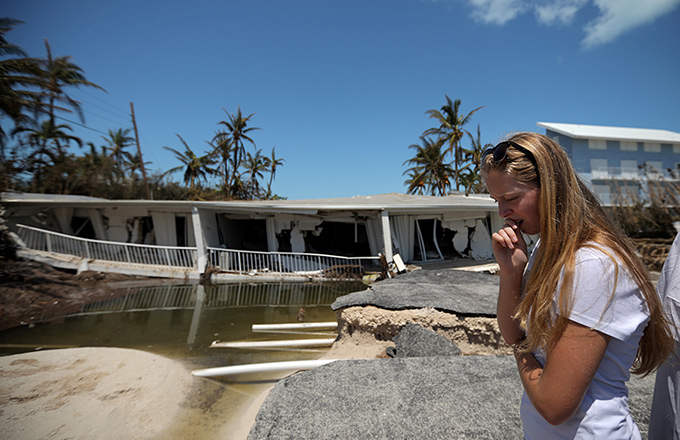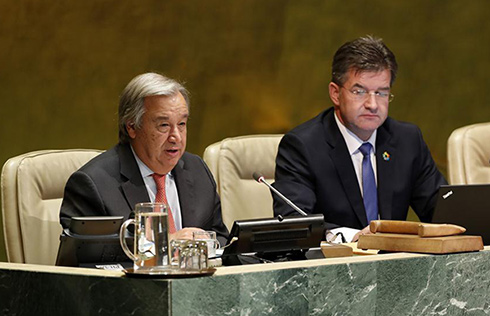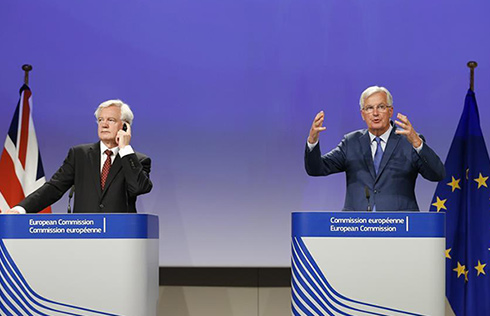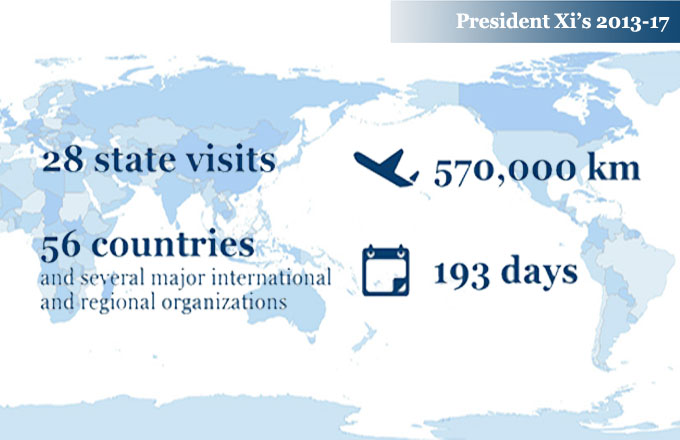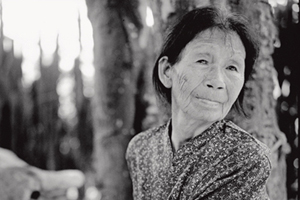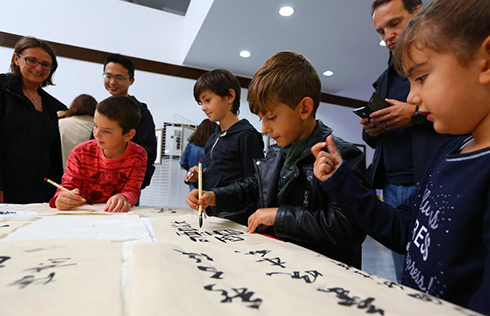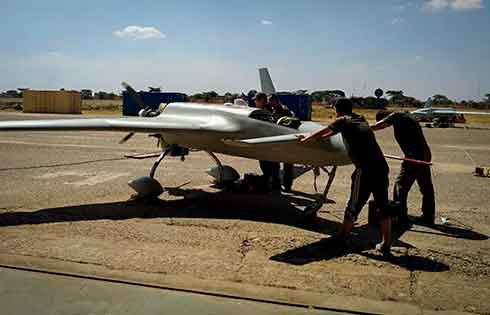Keywords of China's major-country diplomacy: Belt and Road Initiative
Editor's Note: China is rolling out a major documentary series on its diplomatic principles, practices and achievements over the past five years. The English-language version of the program will soon be available on TV and online. To help the audience better understand Chinese diplomacy, Xinhua is releasing a variety of reports that include anecdotes, quotable quotes, facts and figures.
The following is a selection of keywords related to China's foreign policy and their explanations:
The Belt and Road Initiative comprises the Silk Road Economic Belt and the 21st Century Maritime Silk Road, which aims to build trade and infrastructure networks connecting Asia with Europe and Africa on and beyond the ancient Silk Road routes.
In a speech titled "Promote People-to-People Friendship and Create a Better Future" delivered at Kazakhstan's Nazarbayev University on Sept 7, 2013, Chinese President Xi Jinping for the first time proposed building the Silk Road Economic Belt.
On Oct 23, 2013, Xi delivered a speech titled "Constructing Jointly the China-ASEAN Community of Common Destiny" at Indonesia's Parliament, and for the first time proposed building the 21st Century Maritime Silk Road.
The proposed Silk Road Economic Belt is considered the longest economic corridor in the world, potentially the most dynamic, which connects the Asia-Pacific region in the east with developed European economies in the west.
Meanwhile, the proposed 21st Century Maritime Silk Road envisions a network of interconnected markets linking the Association of Southeast Asian Nations, South Asia, West Asia, North Africa and Europe, and a strategic partnership for the South China Sea and the Pacific and Indian oceans.
-- The spirit of the Silk Road is embodied in solidarity and mutual trust, equality and mutual benefit, inclusiveness, a disposition to learn from each other and cooperation in finding win-win solutions.
-- The Silk Road Fund was established in Beijing on Dec 29, 2014, following Xi's announcement on Nov 8 that China would contribute $40 billion for this purpose. The fund will support infrastructure and resource development and industrial cooperation in the countries on the land and sea Silk Roads.
-- The Asian Infrastructure Investment Bank, established in 2015, is a regional intergovernmental development institution focused on supporting infrastructure development. It is the first multinational financial institution sponsored by China. As of the end of March 2017, the bank's membership had reached 70, second only to that of the World Bank.
-- The Steering Group for the Belt and Road Initiative has been established at the national level to study important issues related to planning, policy and projects, and to provide guidance and coordination in the implementation of the initiative.
-- In his speech at Kazakhstan's Nazarbayev University on Sept 7, 2013, Xi proposed building the Silk Road Economic Belt by a five-pronged approach: promoting policy coordination, road inter-connectivity, unimpeded trade, currency convertibility, and closer people-to-people ties.
-- By the end of 2016, over 100 countries and international and regional organizations had expressed an interest in participating in implementing the initiative, and more than 40 of them had signed cooperation agreements with China thereon.
-- Since 2013, China has invested more than $50 billion in countries on the Belt and Road. In 2016 alone, direct investment reached $14.5 billion, or 8.5 percent of China's total outbound investment.
-- China signed $126 billion worth of new contracts for projects in countries on the Belt and Road in 2016, up 36 percent year on year.
-- China's trade with countries on the Belt and Road rose 0.5 percent year on year to 6.25 trillion yuan ($906.3 billion) in 2016.
-- As of the end of 2016, Chinese businesses had built 56 economic and trade cooperation zones in more than 20 countries on the Belt and Road, with the total investment exceeding $18.5 billion, generating nearly $1.1 billion in tax revenue and creating nearly 180,000 local jobs.
-- China has industrial capacity cooperation systems with nearly 20 countries. Notably, China and Kazakhstan have signed agreements on 51 major cooperation projects worth $27 billion.
-- China has signed more than 130 bilateral and regional transport agreements with countries involved in the Belt and Road Initiative to improve inter-connectivity.
-- China-Europe express freight trains have covered 28 cities in 11 European countries since being launched in 2011. More than 3,500 trips have been made so far, and the figure is planned to rise to 5,000 a year by 2020.
-- The China-Pakistan Economic Corridor, one of the six economic corridors envisaged by the Belt and Road Initiative, has seen rapid progress, with major highway, railway and port projects under way.
-- Construction has started or neared completion on other large transport infrastructure projects on the Belt and Road, including the Colombo Port City and Hambantota Port in Sri Lanka, the Jakarta-Bandung high-speed railway in Indonesia and the Mombasa-Nairobi railway in Kenya.
-- As of the end of 2016, China had signed more than 300 intergovernmental agreements and implementation programs on cultural exchange and cooperation with countries on the Belt and Road.
-- China has set up an official Silk Road scholarship and held cultural events and art festivals with Belt and Road countries.
-- The ancient Silk Road was inscribed on the UNESCO World Heritage list in 2014, and a joint application has started for the inclusion of the Maritime Silk Road.




